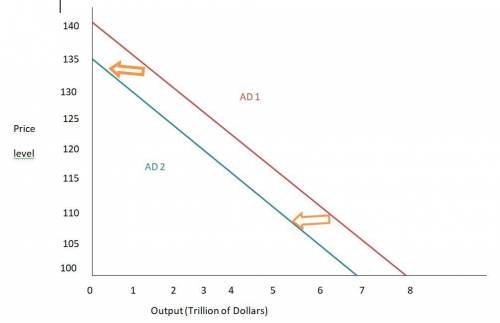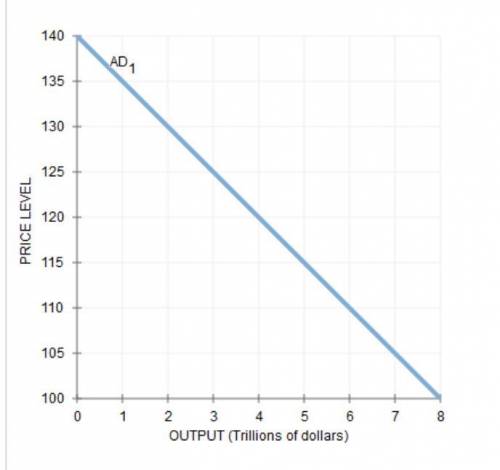
Business, 30.05.2020 05:58 rileyeddins1010
Consider a hypothetical closed economy in which households spend $0.75 of each additional dollar they earn and save the remaining $0.25.
The marginal propensity to consume (MPC) for this economy is ___(0.25 / 0.75 / 1 / 1.33 / 4)___ , and the spending multiplier for this economy is (0.25 / 0.75 / 1 / 1.33 / 4) .
Suppose the government in this economy decides to decrease government purchases by $250 billion. The decrease in government purchases will lead to a decrease in income, generating an initial change in consumption equal to (-1,000billion / -500billion / -187.5billion / -93.8billion / -62.5billion)___ . This decreases income yet again, causing a second change in consumption equal to ___(-1000billion / -500billion / -93.8billion / -140.6billion / -62.5billion) . The total change in demand resulting from the initial change in government spending is .

Answers: 2


Other questions on the subject: Business

Business, 21.06.2019 15:00, iviestrong7430
Becky fenton has 40/80/40 automobile insurance coverage. if two other people are awarded $75,000 each for injuries in an auto accident in which becky was judged at fault, how much of this judgment would the insurance cover?
Answers: 1

Business, 21.06.2019 16:50, michellemunoz250
Malcolm has several receipts from recent transactions that he entered in his records. the receipts include an atm receipt for an $80.00 deposit, a grocery store receipt for $25.50, and a paycheck deposit slip for $650.00 when he finishes entering his transactions, malcolm realizes that his balance is incorrect. assuming that malcolm had no beginning balance, what should his correct balance be?
Answers: 1

Business, 22.06.2019 06:30, solphiafischer
Individual consumers belong to which step of choosing a target market? possible customers competition demographics communication
Answers: 2

Business, 22.06.2019 15:20, sgalvis455
Abank has $132,000 in excess reserves and the required reserve ratio is 11 percent. this means the bank could have in checkable deposit liabilities and in (total) reserves.
Answers: 3
You know the right answer?
Consider a hypothetical closed economy in which households spend $0.75 of each additional dollar the...
Questions in other subjects:

History, 07.11.2020 01:00

Mathematics, 07.11.2020 01:00

Mathematics, 07.11.2020 01:00


Mathematics, 07.11.2020 01:00





Health, 07.11.2020 01:00





